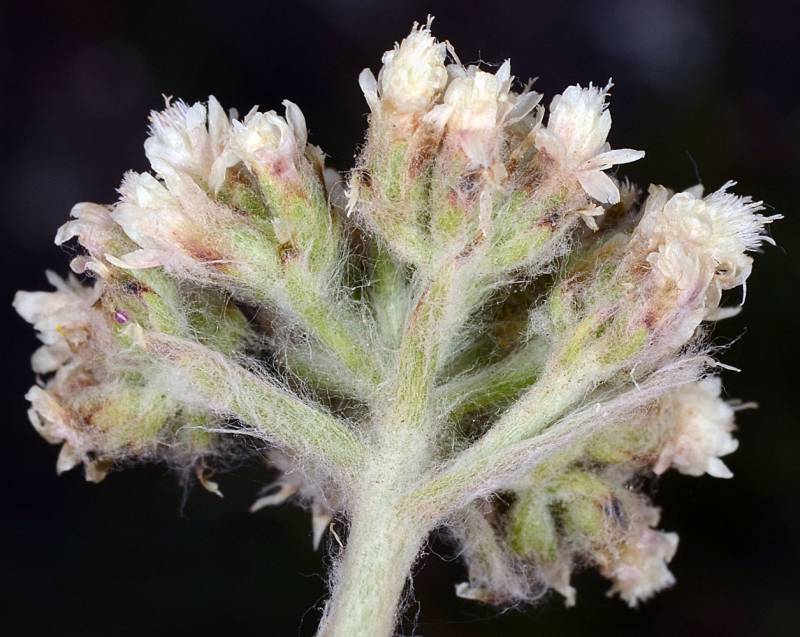Antennaria parlinii
Antennaria anaphaloides
tall pussytoes
Basal leaves numerous, white-woolly on both sides, up to 15 cm. long and 2 cm. wide;
cauline leaves linear, progressively reduced upward.
Heads many in a broad, compact inflorescence; pistillate involucres 5-8 mm. high; the scarious upper portion of the bracts wholly white, the lower portion densely pubescent, white, commonly with a small dark spot at the base.
Achene terete
Antennaria parlinii
Antennaria anaphaloides
Occurring chiefly east of the Cascades crest in Washington; British Columbia, including southern Vancouver Island, to Oregon, east to Sasketchewan, Montana, Colorado, and Nevada.
- Local floras:
BC,
OR,
WA
- Local Web sites:
Flora NW,
PNW Herbaria
WildflowerSearch
iNaturalist (observations)
USDA Plants Database
- LBJ Wildflower Center
- SEINet
- Plants of the World Online
- Encyclopedia of Life
- Wikipedia
- Google Image Search


